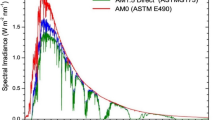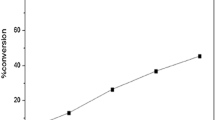Abstract.
Phototransformation of aromatic pollutants (ethiofencarb, 4-chloro-2-methylphenol, nitrobenzene, propiconazole, acifluorfen and thiobencarb) in natural sunlight was investigated in various aqueous media: (i) in pure water, (ii) in natural water samples, and (iii) in pure water to which humic acid (HA) (10 mg L-1) had been added. Half-lives were measured and photoproducts assessed. In natural water samples and in HA solutions ethiofencarb and 4-chloro-2-methylphenol were found to disappear mainly by photosensitized reactions whereas the other compounds underwent mostly direct photolysis. Photosensitized transformations were shown to be largely due to photoreactants other than singlet oxygen and hydroxyl radicals. These species oxidize preferentially compounds bearing a phenolic OH group or an oxidizable S atom.
Similar content being viewed by others
Author information
Authors and Affiliations
Additional information
Received: 10 June 2001; revised manuscript accepted: 20 February 2002
Rights and permissions
About this article
Cite this article
Vialaton, D., Richard, C. Phototransformation of aromatic pollutants in solar light: Photolysis versus photosensitized reactions under natural water conditions. Aquat. Sci. 64, 207–215 (2002). https://doi.org/10.1007/s00027-002-8068-7
Issue Date:
DOI: https://doi.org/10.1007/s00027-002-8068-7




